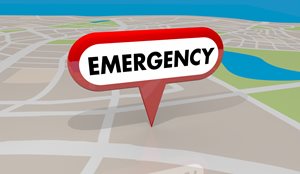(11/4/2019)
Disasters can happen at any time. Severe storms, active shooters, disease outbreaks and other events are not as rare as they once may have seemed. When one of these incidents occurs at or near your healthcare facility, how do you respond? Being prepared for an emergency is vital for the functionality of healthcare facilities and their ability to serve patients when disaster strikes.

Here are eight essential practices to save your facility from committing mistakes that affect your profits, reputation, and most importantly, the safety of your patients.
- Collaborate with nearby healthcare facilities
Having a response plan that is specific to your facility’s location, risks and local response organizations is imperative to ensuring survival during a major event. Collaborate with other facilities nearby to have a unified plan for when an emergency situation occurs. Not only will collaboration highlight areas in which your facility can improve individually, but it will also ensure that the people in the community will be adequately cared for if and when an emergency situation occurs.
In addition to collaborating with fellow healthcare facilities around you, collaborating with ambulance services and emergency responders is another important step. This will help clarify their roles in the response plan and align expectations during training exercises.
- Train all personnel
One failure of emergency response programs is to only train a handful of staff on the emergency response plan. Facilities have a wide variety of personnel such as greeters, registration clerks, food service employees and facilities maintenance associates. All employees should be trained in the event of a disaster to ensure the safety of the patients and visitors. Multiple levels of training from awareness to response should be conducted and become an annual competency for all associates of your healthcare facility.
- Create an internal and external emergency communications infrastructure
With all that’s at stake during an emergency situation, the ability to respond effectively requires clear, accurate and rapid communications with all affected audiences. Facilities should consider employing a public information officer to coordinate messages, create plans for internal communications and respond to external inquiries. Having a social media specialist on board is also ideal to monitor any messages that come through via social media and distribute updates to the public.
It’s important to note, however, that withholding information will backfire. In this day and age, information can leak from anywhere at anytime, so ensure you are open and honest with any important information that affects your community to show them that they can trust your healthcare facility.
- Ensure your plan covers technology fail-safes and protocol
It’s not easy to understand the logistics behind the physical and technological components of your response plan and how they work together to keep your facility running during a disaster. For example, storing your equipment all in one place can be detrimental in the event of a storm should the room become inaccessible. Spreading equipment and resources out around the facility, on the other hand, may help mitigate logistical challenges. Knowing the needs and logistics of hardware, software, space and other resources for your facility to remain operational during a disaster will keep the facility running as smoothly as possible.
- Don’t risk resource shortages
One hospital Medxcel worked with had previously arranged for ambulances and resources to come in from out-of-state areas in case of an emergency. When an emergency did strike, the hospital was able to supply extra generators to the local water department to help get the department’s systems back up and running. With this extensive planning, the hospital made an enormous difference for their facility as well as the community as a whole.
- Train executive leaders to understand their role
Everyone in your facility needs to be on board with the response plan, including your executives.
Consider holding frequent emergency response meetings with all employees to go over the procedures of the plan and make sure they take notes. This will help ensure everyone fully understands their roles in the response plan, including executives. If your executives understand their roles in an emergency as all other personnel do, they will be just as valuable when your facility’s response plan is in action.
- Once established, follow your emergency plan
It goes without saying that it is imperative to follow the plan set in place for when an emergency situation occurs. There can be some flexibility in the plan, however, the process needs to be standardized. If there is no proper training for all involved, unexpected complications could occur during the emergency. Trying to “wing” this process can prove a disaster for your disaster response.
- In the midst of an emergency, use teams of experts instead of committees
Assembling a team of experts will be a more efficient way of making vital decisions during an emergency rather than going through various committees. Ideally, this team of experts you assemble will have experience dealing with real-life crises, so they are well trained and will not be fazed if one occurs. If you do not have the proper experience in your facility to assemble a crisis expert team, now should be the time to do so before a disaster hits and your facility is unprepared to handle it.
Interested in learning more about emergency response planning so your facility is prepared whenever a disaster strikes? Contact us at info@medxcel.com or 855-633-9235 to learn more.